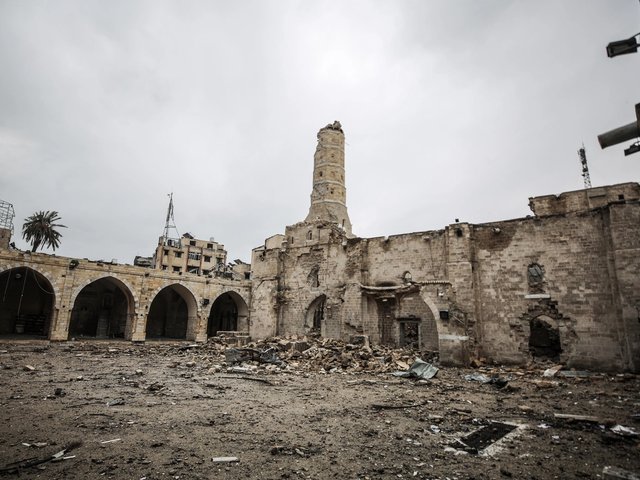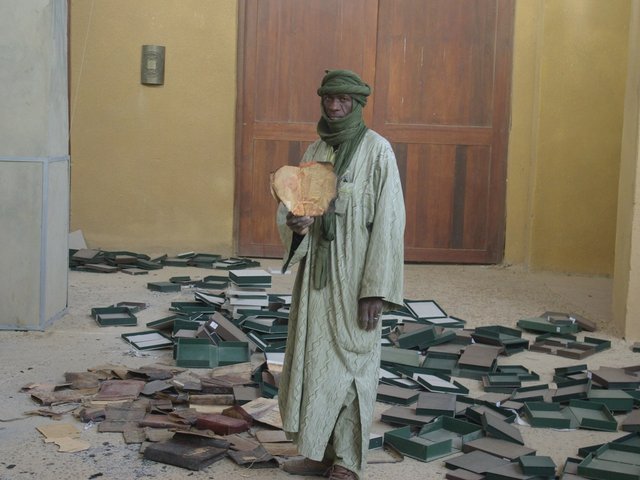Robert Bevan
Member of the International Council on Monuments and Sites, which advises Unesco on world heritage
Only an aesthete with a warped sense of priorities would put crimes against culture on a par with crimes against people. That dusty canard has resurfaced with the trial in The Hague of Al Faqi Al Mahdi for the destruction in 2012 of a mosque and nine of Timbuktu’s World Heritage Site-listed mud-built shrines.
Al Mahdi’s trial at the International Criminal Court (ICC) is the first devoted solely to cultural destruction to be held in an international forum. Under the court’s governing Rome Statute he was charged with the war crime of directing attacks against historic monuments and buildings dedicated to religion. Al Mahdi pleaded guilty and was sentenced on 27 September to nine years in prison.
The decision to prosecute has provoked hostile responses, notably from Jonathan Jones, an art critic for The Guardian newspaper, who wrote: “The most precious work of art in the world is still worth less than a single human life. War crimes as a category must be kept distinct… The destruction of art is vile and offensive to many—but it is not mass murder and we should not pretend it is the same.”
This is a false dichotomy. Attacks on human lives and on material culture are often inextricably linked.
War crimes There has been much incorrect reporting on the issue. A widely repeated supposition is that until the ICC began operating in 2002, crimes against culture had never been treated as war crimes. But such attacks have been defined as such for generations and given equal weight (in theory, at least) to other breaches in the laws regarding the conduct of war, such as maltreatment of prisoners. There is nothing novel about the Rome Statute in this regard.
Cultural attacks are also war crimes under the 1954 Hague Convention on the Protection of Cultural Property in the Event of Armed Conflict. As they are under the Geneva Conventions and its additional protocols. Some argue that they also constitute war crimes under international customary law.
Nor is it the first time such war crimes have been tried. At the International Criminal Tribunal for the former Yugoslavia (ICTY, also held in The Hague), military personnel and politicians were successfully charged with the destruction of cultural property during the Bosnian wars—notably the shelling of Dubrovnik and the destruction of Mostar’s Ottoman-era bridge in 1993. But those trials’ charges included numerous crimes, not attacks on cultural property alone.
Legal limits Whatever the shortcomings of the ICC in terms of its lack of resources, its failure to gather evidence on other terrible crimes and, as some commentators argue, its focus on prosecuting Africans rather than politicians and generals in the West, this trial’s focus has been an opportunity to foreground the seriousness of cultural attacks that have been sidelined in previous cases. The prosecution is to be welcomed.
But there are limits to what it can achieve. The legal framework deals with attacks on culture only as war crimes—that is, for not complying with agreed standards of conduct in conflicts. What is missing is the recognition that cultural attacks can also be a crime against humanity—a separate category from war crimes with genocide at its nadir.
This happened only tentatively at the ICTY, where statutes covered the destruction of religious buildings (rather than secular monuments) as an element of persecution but not genocide itself.
When cultural attacks are intended to erase identities and memories in the name of religion, politics or conquest, they are a crime against humanity—an attempt to dehumanise and devalue. Where there is also an intention to destroy a group in whole or in part through cultural deracination as much as murder, it should count as genocide.
Daesh (Isil) has been using this genocidal tactic against minorities across Syria and Iraq. Ansar Dine (Al Mahdi’s group) may not, on the other hand, have had genocide as its intent in Mali. It is crucial to establish the differences but a war crimes trial cannot achieve this—that is not its aim.
Raphael Lemkin, the lawyer who coined the word genocide near the end of the Second World War and did much to get the 1948 Genocide Convention through the United Nations, wrote: “Burning books is not the same as burning bodies but when one intervenes against the mass destruction of churches and books one arrives just in time to prevent the burning of bodies.”
Destroying Culture Lemkin wanted “vandalism”—cultural destruction—to be part and parcel of the Genocide Convention and was deeply disappointed when political interference prevented this. He hoped, vainly, that his vandalism clauses could be added at a future date.
They must be inserted if people are to properly understand the true horror that can lie behind the intent to level a monument. While such an act means the loss of a work of art it can also be a step towards the loss of a people. This goes beyond a failure to abide by the rules of violent engagement. Humanitarian laws and the laws of armed conflict need to be reconciled.
Those who have seen their cultural edifices destroyed around them understand this. It was ordinary Malians, not aesthetes, who risked their lives by forming protective human chains around monuments and spiriting away ancient library texts. These artefacts are who they are. Destroying them is not just a war crime but a crime against humanity.




